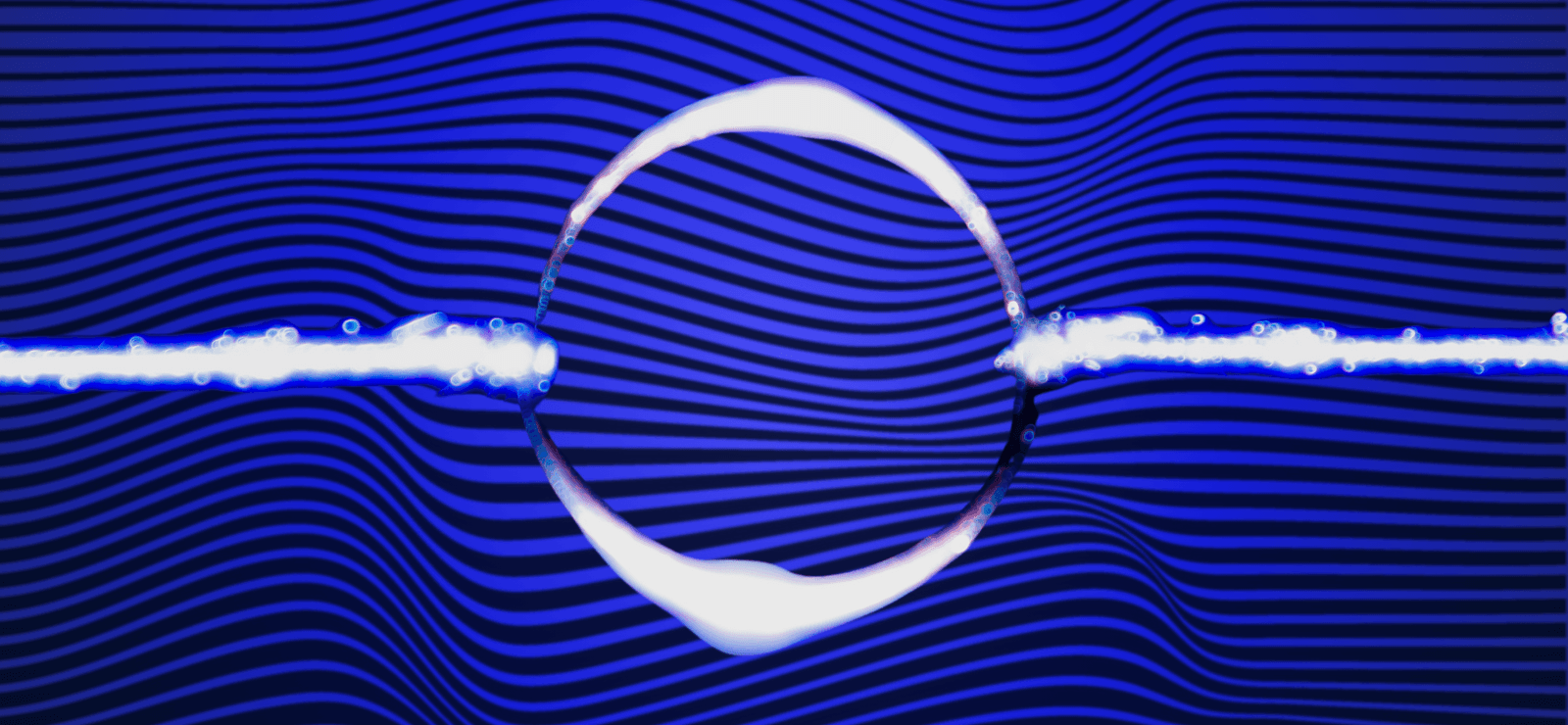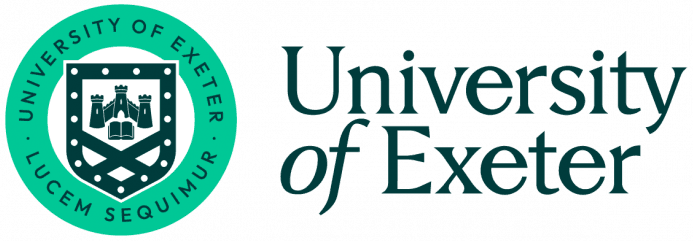Thematic Overview
“I see no reason to suppose that the air about us and the heavenly spaces over us might not be peopled by intelligences, or entities, or forms of life… and—who knows?—perhaps the nebulae are sentient entities and what we can see of them are their bodies.”
– Alfred North Whitehead
In recent years, the growing recognition of plasma’s pervasive role in the universe has sparked fascinating questions at the crossroads of science, philosophy, and transpersonal psychology—fields that have traditionally overlooked its significance. Plasma cosmology, in particular, challenges the assumptions of standard cosmology, offering an alternative view of cosmic phenomena—from galactic formation to the behavior of interstellar “matter.” While key figures in the history of science have made groundbreaking discoveries regarding plasma, including the recent identification of vast plasma clouds between the Earth and the Moon, these contributions remain largely underappreciated. However, the general public is beginning to take greater interest, particularly in light of increasing UFO/UAP activity worldwide and its potential connections to plasmoid electromagnetic phenomena.
Research into the relationship between life, intelligence, and plasma raises compelling new questions: Could plasma serve as a medium for non-organic life and intelligence? As plasma plays a central role in cosmic evolution, its influence stretches far beyond conventional “physical” processes, venturing into the realm of exceptional experiences and transpersonal states of consciousness. The exploration of plasma’s connections to astrobiology, ancient spiritual wisdom, and modern philosophies of mind remains an exciting, yet underexplored, frontier. Panpsychism and process philosophy, in particular, may offer innovative metaphysical frameworks for interpreting the emerging data from plasma cosmology, unveiling its profound potential for transpersonal experiences.
This workshop brings together leading scientists and philosophers to explore the intricate relationships between plasma, consciousness, and cosmic evolution. In a collaborative effort, we will examine how plasma cosmology challenges traditional paradigms, offering new perspectives on the nature of life, intelligence, and experience. Our goal is to cultivate a deeper comprehension of plasma’s far-reaching implications for understanding the universe and our place within it.
Revitalizing Biophilosophy
Day 1
Day 2
Workshop Participants

Robert Temple
Robert Temple is the author of more than twenty books on a variety of subjects. Recently, his book A New Science of Heaven deals with the subjects of this conference. Temple is an independent scholar who has been appointed an Adjunct Professor of Humanities, History, and Philosophy of Science at an American university, and a Visiting Professor of History and Philosophy of Science at Tsinghua University in Beijing. As a former colleague of Joseph Needham of Cambridge, he is the author of a book on the history of science and technology in China over 3,000 years—a book authorized for use in the Chinese school system. Temple became a member of the Council of the China-U.S. Center for Sustainable Development in 2000–2001. He is presently Chairman of five European cultural foundations.
The Need for a New Science
Science, as it exists at the present time, is inadequate for purposes of understanding the Universe. Our physics works very well for us here on Earth and in our solar system, where much of what exists is made of atoms, But the Universe is now known to consist of 99% plasma in various forms (gaseous, liquid, solid, and crystalline), which is not made of atoms. Although we have made some progress in creating a plasma physics, it is not sufficiently advanced, and must grow much more. We also need to rid ourselves of the stultifying tendency to approach science from a reductionist viewpoint. Dwelling on “the bits that make up physical matter” and hoping to create a science by going up from bits to wholes is a dead end. We need to accept that the key to what happens in the Universe is the process of self-organized criticality, which gives large wholes, the very opposite of reductionist thinking, and the products of which follow mathematical power laws. We need to accept the predominant importance of open systems. All of our linear equations dealing with closed systems are like Stone Age relics, and we have to accept that everything that is important is non-linear.
We need to make vast increases in our research in the key areas of topological physics, which includes edge physics and hinge physics. We need to make charged current flows (such as particles and ions) more central to our thinking in the field of biology. We need to give precedence to electro-magnetic forces over gravitational forces in our cosmologies. We need to try really to understand what mass is, what energy is, what fields are, what charge is, what force is, and so on. For we do not really know the answers to these questions. We speak of them, we use them, but we don’t know what they actually are. It is no use defining electricity as a flow of electrons, because we don’t know what electrons are. And there is still work to do in the fundamentals of arithmetic, as Bertrand Russell pointed out so strongly. And we need to encourage cross-discipline unifying thought. Specialization has gone too far, and we need more stimulating free-thinking institutions like the Molecular Biology Lab at Cambridge as it was under Max Perutz, the Santa Fe Institute, and frankly, more coffee rooms where nobody gets criticized or loses his or her grant because of uttering a speculation.
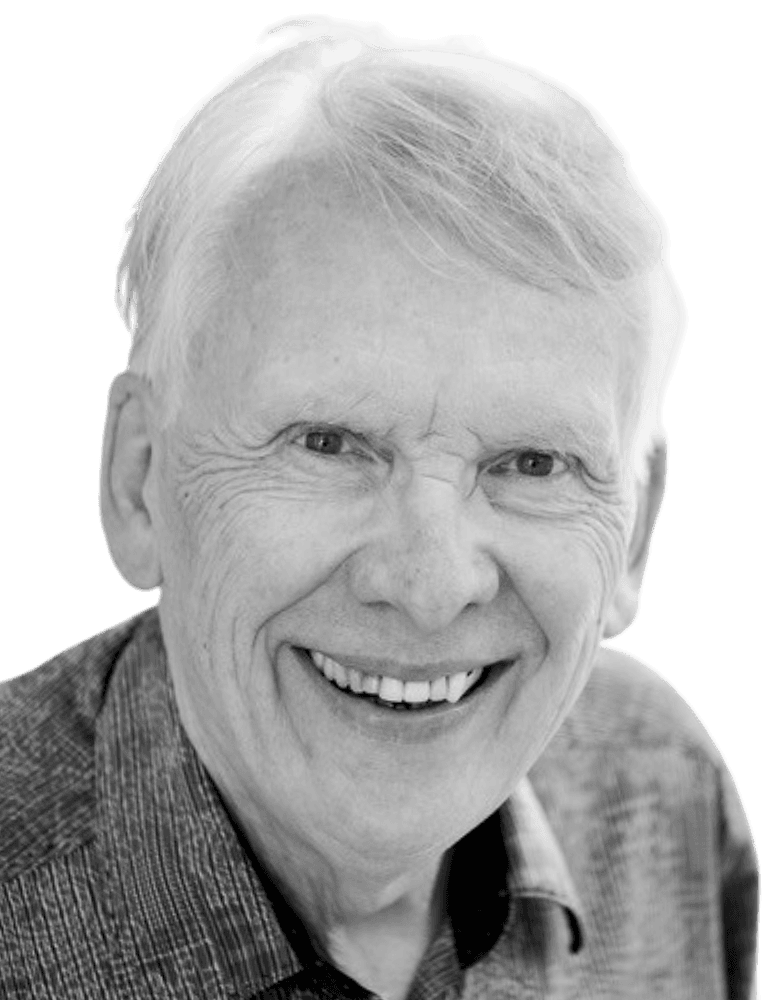
Timothy E. Eastman
Timothy E. Eastman was a senior scientist at NASA’s Goddard Space Flight Center (retired) and has more than 40 years of experience in research and consulting in space physics, space science data systems, space weather, plasma applications, public outreach and education, and philosophy of science. Dr. Eastman’s interest in philosophy and philosophy of science extends over three decades with several journal publications in philosophy in addition to the SUNY volume. He is on International Advisory Boards for Process Studies and Studia Whiteheadiana (Poland), was lead editor of Physics and Speculative Philosophy (2016, DeGruyter Press). His latest book is Untying the Gordian Knot: Process, Reality, and Context (Lexington Books, 2020), which articulates a natural philosophy for the 21st century.
From Cosmic Agnosticism to a New Natural Philosophy
My current worldview arises from a mix of (1) the process tradition going back to Schelling, Peirce, and Whitehead, (2) my profession of space physics, which highlights the importance of electromagnetism (EM) and plasma processes, (3) exposure to a cosmic agnosticism that emphasizes both gravity and EM/plasmas, and (4) a convergence of quantum physics understandings that reveals the real, inclusively, as both the actual and the possible. As laid out in my book Untying the Gordian Knot (2020) and a recent essay in Pari Perspectives (1/25), these multiple strands of thought appear to be converging towards a new natural philosophy.
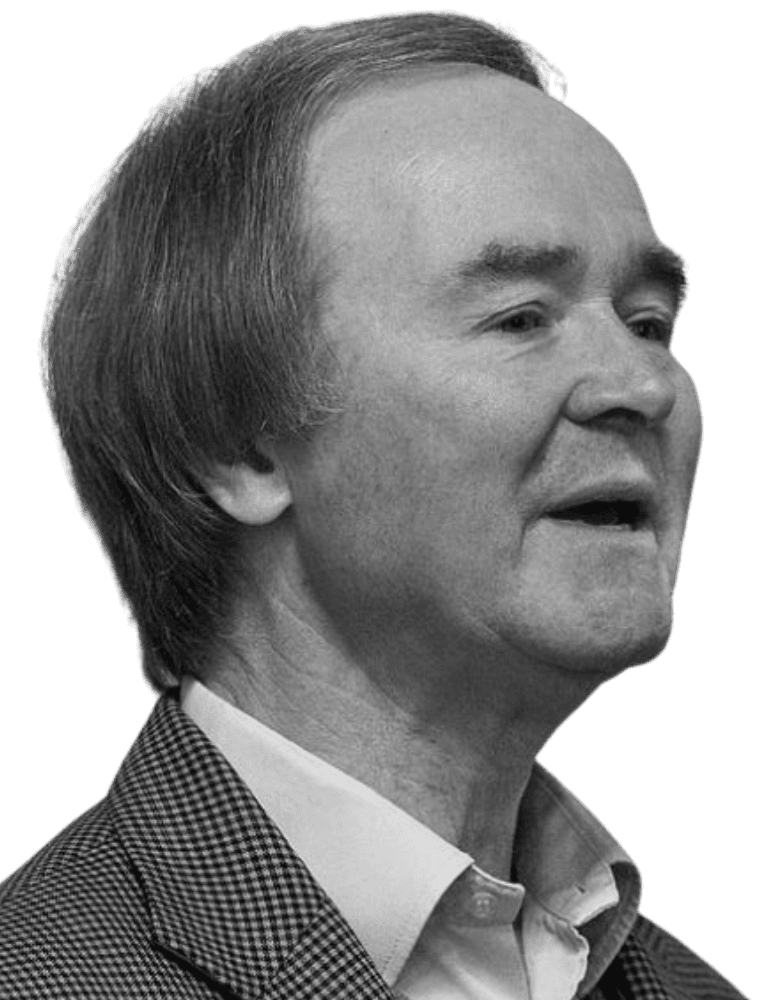
Bernard Carr
Bernard Carr is Emeritus Professor of Mathematics and Astronomy at Queen Mary University of London. As an undergraduate, he read mathematics at Cambridge University, and for his PhD he studied the first second of the Universe, working under Stephen Hawking at Cambridge and Caltech. He was elected to a Fellowship at Trinity College, Cambridge, in 1975, and in 1980 spent a year traveling around America as a Lindemann Fellow before taking up a Senior Research Fellowship at the Institute of Astronomy in Cambridge. In 1984, he was awarded the Adams Prize, one of the UK’s most prestigious mathematical awards. He moved to Queen Mary in 1985 and became a Professor there in 1995. He has also held Visiting Professorships at various institutes in America, Canada, and Japan.
Expanding Science to the Psychophysical Domain: The Boundary of Heterodox and Orthodox Physics
It is argued that science—and even physics—must expand beyond the material domain to accommodate mind and spirit. Indeed, the greatest challenge is to explain a range of phenomena on the psychophysical boundary which appear to involve an interaction between consciousness and the physical world. Although orthodox science is skeptical of most of these phenomena, if they are real, physics must expand into the heterodox domain in order to accommodate them. One such approach is the hyperspatial paradigm. This suggests that the material world is a slice of a higher-dimensional reality structure, with various anomalous interactions being interpreted as transdimensional influences.
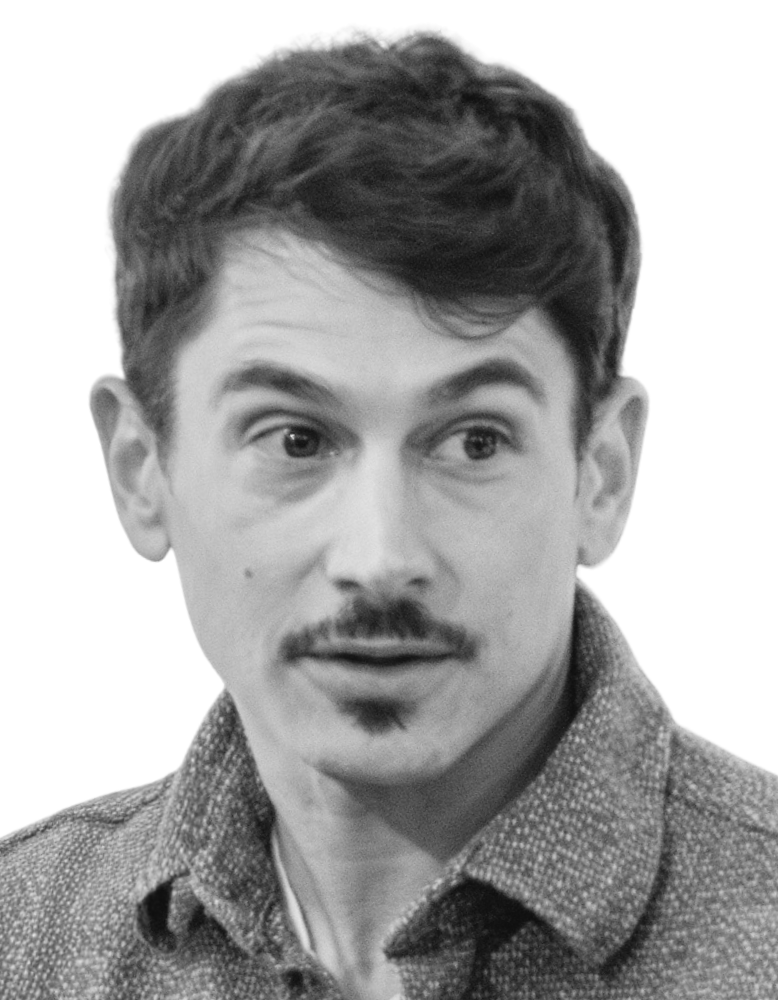
Matthew David Segall
Matthew David Segall is an Associate Professor in the Philosophy, Cosmology, and Consciousness program at CIIS. He is a philosopher and transdisciplinary researcher whose work applies process-relational thought to contemporary science and religious studies. Segall’s research explores how Alfred North Whitehead’s process metaphysics – which emphasizes events, relationality, and emergent evolution – can illuminate modern scientific questions in physics, biology, and consciousness studies. His most recent book is titled Crossing the Threshold: Etheric Imagination in the Post-Kantian Process Philosophy of Schelling and Whitehead (Integral Imprint, 2023). He blogs regularly at footnotes2plato.com
Ever-Living Fire: Plasma Cosmology in Light of the Philosophy of Organism
Plasma has long been footnoted as the “fourth state” of matter. Re-examined through F. W. J. Schelling’s Naturphilosophie, R. Steiner’s etheric science, and A.N. Whitehead’s process-relational cosmology, plasma re-emerges as not an anomalous afterthought but as perhaps the prima materia—an incandescent matrix from which the cooler precipitates of gas, liquid, and solid slowly congeal. From the quark–gluon sea of the first micro-seconds of cosmic life to the Birkeland currents that now braid solar systems and galactic megaclusters together, plasma composes more than ninety-nine percent of the visible universe. The mechanistic conception of matter remains too geocentric, distorting our understanding of the true elemental make-up of the physical world as if it were mostly solid bodies colliding in empty space. In fact, there is no such thing as “empty space.” Plasma is pervasive. Heraclitus was right: the world is an ever-living fire.
When Irving Langmuir coined the term plasma in 1928, he did so not merely to label an exotic state of ionized gas but to evoke a novel organismic medium, akin to the life-bearing fluid of blood plasma—an intuition of vital significance. What Langmuir grasped, however faintly, is that plasma is not a passive background but a responsive field exhibiting behaviors more akin to living tissue than dead particles. In plasma, electromagnetic forces choreograph collective, emergent patterns—spiraling filaments and double layered toroidal spheres—that prefigure the morphogenetic potency of life.
Despite its pretenses, modern space science remains geocentric in method and imagination, reading the cosmos backwards from terrestrial conditions, enthroning entropy and gravity while marginalizing plasma and all but ignoring the living etheric formative forces emphasized by organic and participatory natural philosophers (Goethe, Schelling, Steiner, Whitehead, etc.). Unlike matter conceived mechanistically as solid, liquid, or gas, it is the etheric quality of plasma that makes it self-organizing and that sensitizes its electromagnetically mediated vector-feelings to the lure of deeper intimacy through complexity. My remarks at our workshop will call for a cosmocentric, process-relational physics: an approach that contextualizes entropic decay and gravitational collapse in a wider creative advance, with plasma dynamics providing an especially striking example of what a more organic physics would look like.

Steve Odin
Steve Odin is Professor in the Department of Philosophy at the University of Hawai‘i. He joined the department in 1982 after completing his PhD in philosophy from the State University of New York at Stony Brook. He has taught as a visiting professor at Boston University (1989), Tohoku University (1994–95), and the University of Tokyo (2003–04). His research and teaching areas include Japanese philosophy, East–West comparative philosophy, American philosophy, Whitehead’s process metaphysics, phenomenology, existentialism, environmental ethics, and aesthetics. Among his publications are Process Metaphysics and Hua-Yen Buddhism (1982), The Social Self in Zen and American Pragmatism (1994), Artistic Detachment in Japan and the West: Psychic Distance in Comparative Aesthetics (2001), and Tragic Beauty in Whitehead and Japanese Aesthetics (2016).
A. N. Whitehead’s Philosophy of Organism, Indra’s Net, and the Cosmic Web in Plasma Cosmology
In my previous work I have often discussed Alfred North Whitehead’s organismic process cosmology in relation to the East Asian Chan/Huayan (Japanese: Zen/Kegon) Buddhist holographic, kaleidoscopic, and panoramic vision of the pluralistic multiverse as a harmonious unobstructed interpenetration between disjunctive multiplicity and conjunctive unity based on the poetic metaphor of Indra’s Net. According to Whitehead’s panpsychic and organismic process cosmology of a living universe as a dynamic network of interconnected sentient events, similar to the Huayan Buddhist vision of Indra’s Net, there is a harmonious interpenetration between one and many, part and whole, organism and environment, foreground and background, such that there is no “simple location” and each self-creative occasion of experience both contains and pervades the entire undivided aesthetic continuum of nature as a microcosm of the macrocosm. This presentation will further analyze how the Whiteheadian philosophy of organism and the Huayan Buddhist all-embracing holographic vision of Indra’s Net relates to the Cosmic Web of contemporary plasma cosmology where everything is interconnected to everything else by filamentary electromagnetic currents flowing through superconductive plasma fields as the grid-like scaffolding of the universe. Moreover, I will briefly discuss the relation of the Cosmic Web, Indra’s Net, and Whitehead’s organismic process metaphysics to the aesthetic-theoretical image/concept of a Rhizome as a decentered network of autonomous multiplicities posited by Deleuze-Guattari in contemporary French postmodernist thought.
Finally, I will consider how the Cosmic Web of filamentary currents in plasma cosmology observed through high-tech telescopes at the macroscopic level, is also observed at the microscopic level of the human physical body in the neural network of the brain, as well as the complex network of filamentary bioelectrical currents in the human subtle body or plasma field as discussed in various eastern disciplines, such as Kundalini Yoga, Qigong, Daoist alchemy and traditional Chinese medicine, and Tibetan Buddhist Tummo or inner fire yoga.

Andrew M. Davis
Andrew M. Davis is an American process philosopher, theologian, and scholar of the cosmos. He is Research and Academic Director for the Center for Process Studies, where he researches, writes, teaches, and organizes conferences on various aspects of process-relational thought. An advocate of metaphysics and meaning in a hospitable universe, he approaches philosophy as the endeavor to systematically think through what reality must be like—because we are a part of it. He is author, editor, and co-editor of nearly a dozen books, including Mind, Value, and Cosmos: On the Relational Nature of Ultimacy (2020); Process Cosmology: New Integrations in Science and Philosophy (2022); Metaphysics of Exo-Life: Toward a Constructive Whiteheadian Cosmotheology (2023); and Whitehead and Teilhard: From Organism to Omega (2025). His forthcoming book is a comprehensive yet conversational introduction to Alfred North Whitehead titled Whitehead’s Universe: A Prismatic Introduction. Follow his work at andrewmdavis.info.
Toward a Living Ontology: Rethinking Life, Sentience, and SETI in a Process Plasmaverse
At the heart of process philosophy and theology is a robust engagement with the best of contemporary physics and cosmology. Recent years have also shown process thinkers contributing to related discussions concerning astrobiology and extraterrestrial life. Exploration of the utter ubiquity of plasmas and plasma activity in the universe has been lacking, however, and may prove to be an essential bridge between these micro and macro domains of discourse. This presentation considers several points of contact and potential reciprocity between plasma physics and process metaphysics in the tradition of Alfred North Whitehead (1861-1947), Teilhard de Chardin (1881-1955), Charles Hartshorne (1897-2000) and other key voices. Focusing on the nature of matter, life, and sentience, I argue that process ontology offers a fruitful philosophical framework for recent discussions of plasma as the “fourth state of matter” and even a form of non-biological life (“pre-life”) and sentience in the universe. That plasmas or plasmoids exhibit life-like behavior that is complex and self-organizing is consistent with the possibilities afforded by a biopsychic (“life-mind”) ontology as differently expressed in the process tradition. If the fundamental activity of the plasmaverse consists in electromagnetic sparks of life-mind, then the range of highly evolved life and sentience in the universe may be extraordinarily vast. As some plasma voices have recently argued, extraterrestrial life in the form of electromagnetic plasma societies may be far more encompassing and communicative in nature. Recent suggestions that the vast Kordylewski plasma clouds may be living and intelligent can be compared to Whitehead’s own speculations about sentient nebulae and Teilhard’s conjectures about a “cloud of thinking stars.” Indeed, both astronaut testimony and empirical data may support the conviction that plasmoids express life-like interactions and even “awareness.” This has led some to call for a new approach to SETI in the plasmaverse, including the possibility of an “alien-hunting satellite” specifically designed to attract and perhaps even capture extraterrestrial plasmas. Are we ready for such a thing? What are the implications, risks, and rewards?

Nick Cook
Nick Cook is an author, investigative journalist, and former Aviation Editor of Jane’s Defence Weekly, widely recognized for his in-depth investigations into advanced aerospace technologies, black projects, and the intersection of science and the unexplained. His best-known book, The Hunt for Zero Point, explored secret propulsion research and helped open mainstream discourse around classified physics. His forthcoming book—currently untitled—examines anomalous phenomena through a metaphysical lens, weaving together Gnostic cosmology, interface theory, and the science of consciousness. Cook’s research spans plasma physics, simulation theory, transpersonal psychology, and the transformative potential of anomalous experiences. He is the founder of the EXO Institute, an interdisciplinary initiative dedicated to exploring the threshold between perception, consciousness, and the unknown.
The Entropic Intervention Hypothesis: Plasma, Perception, and the Intelligence of the Interface
In this talk, I’ll explore the possibility that certain aspects of the UFO/UAP phenomenon—particularly those associated with plasma-like manifestations and so-called “high strangeness”—may reflect the presence of an intelligence embedded in, or emergent from, the fabric of reality itself. Rather than framing these anomalies exclusively in terms of advanced technology or extraterrestrial visitation, I’ll propose that they may instead serve a systemic or even therapeutic function within a larger field of information, consciousness, or cosmological process. This line of inquiry draws on perspectives from plasma cosmology, simulation theory, and quantum models of consciousness—as well as observational data—intersecting with philosophical and transpersonal interpretations of perception, trauma, and transformation. The aim is not to offer a unified theory, but to open space for a new metaphysics of contact—one that accommodates both scientific rigor and experiential depth. What emerges may have implications for how we think about reality, coherence, and the role of human consciousness in both.

John Priestland
John Priestland is a Fellow of both the Institute of Physics and the Institution of Civil Engineers. He holds an MBA from London Business School and has held senior leadership roles in major engineering and construction firms. He is the Founder and Chairman of the Unhidden Foundation, a medically-led not-for-profit based in the UK that supports individuals affected by anomalous and exceptional experiences. John leads a multidisciplinary team of doctors, clinical psychologists and researchers working at the intersection of public mental health, resilience and ontological security—particularly in anticipation of paradigm-shifting revelations about the nature of reality. This includes the possible existence of non-human intelligence (NHI), the implications of which my be profound for human health, psychology and identity.
uNHIdden: Building Resilience for Ontological Shock and Health Implications
If plasma/plasmoid phenomena prove to represent forms of non-human intelligence, humanity faces profound ontological shock that extends far beyond philosophical adjustment. There might also be health-related mechanisms to do with contact between humans and plasmoids that may need consideration. The Unhidden Foundation (“uNHIdden”) was founded to anticipate and prepare for these consequences, focusing on the people and health aspects of “exceptional experiences.” In this talk, I explain what uNHIdden is doing to support better mental health and wellbeing around Unidentified Anomalous Phenomena, and how resilience and ontological security can be built ahead of any society-changing revelations. In particular, I explain how uNHIdden is building collaborations between researchers, healthcare providers, professional medical bodies and practitioners to develop research infrastructure, diagnostic protocols, treatment pathways and prevention strategies that can support human flourishing as we navigate transformed understandings of intelligence and reality.
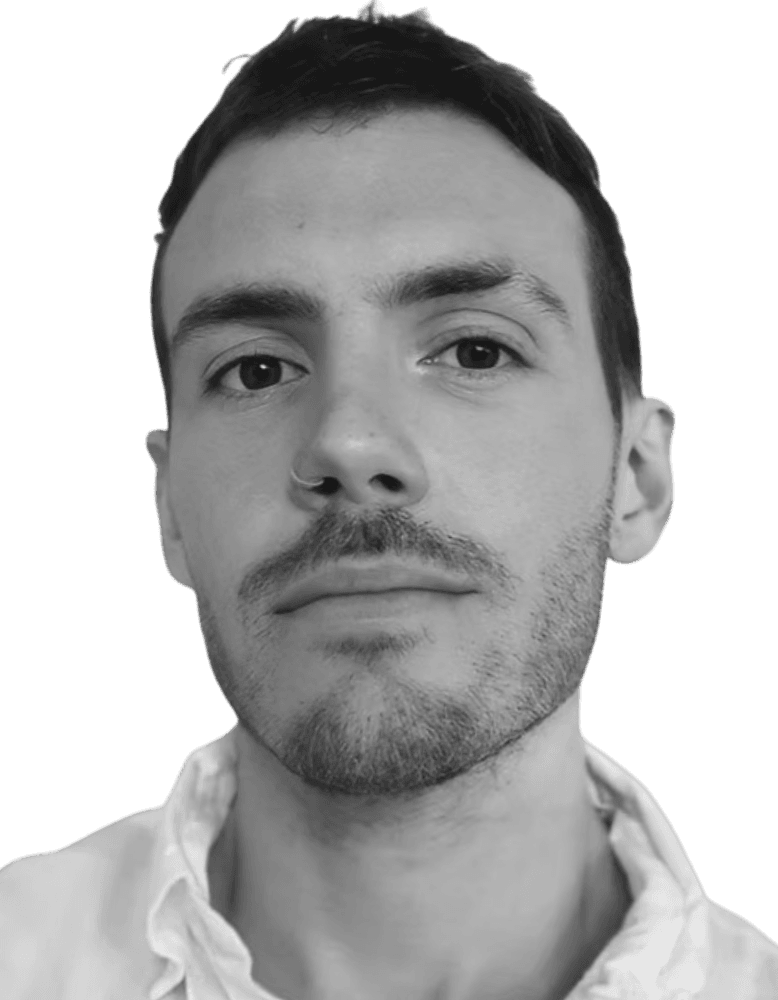
Ashton K. Arnoldy
Ashton K. Arnoldy is a transdisciplinary researcher, artist, and astrologer whose work integrates spiritual practice and scholarly inquiry. He earned his doctorate in Philosophy, Cosmology, and Consciousness from the California Institute of Integral Studies (CIIS), where his dissertation, Directionally Creator: Owen Barfield and the Future of History, presents Owen Barfield’s theory of the evolution of consciousness as a retrieval of metanarrative that can constructively engage the epistemological, ecological, socio-political, and existential challenges of the Anthropocene. Arnoldy’s research interests include the philosophy of history, philosophy of religion, philosophy of technology, media theory, participatory epistemology, aesthetics, ufology, esotericism (particularly Neoplatonic and Hermetic currents), and Goethean phenomenology. He writes and creates digitally across various platforms @micr0k0sm.
The Forge of Vulcanus: Plasma Physics and Premodern Protocols for Self-Cultivation
This talk presents and advocates for the retrieval of certain premodern “protocols”—practices of psychophysical hygiene and cognitive exercise undertaken for the acquisition of wisdom—that reflected an understanding of knowing as a self-implicating (participatory) process involving communion with various non-human intelligences (NHI). Such practices were largely eclipsed by the ostensible bracketing out of subjectivity characteristic of the method of modern science. Today, however, both plasma cosmology—which recognizes that more than 99 percent of the observable universe is an ionized, “fiery” matrix that even our thoughts and feelings can interface with—and contemporary research on certain protocols practiced spontaneously by contemporary NHI contactees (as documented in connection with UFO/UAP phenomena by D. W. Pasulka and others) invite a renewed appraisal of these practices. The same techniques that once animated mystical and alchemical traditions reappear today in the more sci-fi register of modern contact methods, suggesting that spiritual exercises and anomalous aerospace encounters share a common participatory logic. Drawing on this convergence and ideas from the philosopher and alleged clairvoyant, Rudolf Steiner, the presentation sketches speculative bridges from premodern religious experience to an emerging “global cosmism”: a worldview in which the human being is not a passive observer but an ever-forging instrument—Vulcanus—shaped by, and perhaps shaping, the luminous plasma matrix undulating between stars and surging through the electric currents of our own beating hearts.

Massimo Teodorani
Massimo Teodorani is an astrophysicist by education and experience. After graduating in Astronomy, he obtained a PhD in Stellar Physics at the University of Bologna. He has carried out research on eruptive phenomena in astrophysics, in particular supernovae, novae, high-mass close binary stars with collapsed component, highly unstable protostars (FU Orionis type) and cataclysmic and pre-cataclysmic stars. He is an expert in photometric and spectroscopic observation techniques in optical and UV bands. He worked as a researcher at INAF (National Institute for Astrophysics) in Naples and at the INAF Radioastronomical Observatory in Medicina, Bologna. Having experience in both optical and radio astronomy, Dr. Teodorani has also conducted research on the 22 GHz water maser spectral line in 57 candidate exoplanets and has been pursuing the radio-band search for extraterrestrial intelligence (SETI). Dr. Teodorani uses both an observational/experimental and an interpretative/theoretical approach in his research.
Exploring the Physics of Anomalous Light Phenomena and Their Possible Interaction with Human Beings
There are some areas in the world where anomalous light phenomena are reported very often. Maybe the Hessdalen valley in Norway is the most famous of all. In most cases such events appear as incorporeal light spheres which often move erratically in the sky and sometimes very close to the ground, change color, pulsate, change suddenly their apparent size and luminous intensity, split in more parts or merge together; their size can range from 1 to 10 meters, and can last up to two hours, being preceded by very short lasting “flashes” in the sky.
Several attempts of measurement that have been carried out using scientific sensors such as video cameras, spectrographs, radiometers, infrared viewers, radio spectrum analyzers and magnetometers, have shown in quite good detail the behavior of such phenomena.
New research projects are aimed at measuring the intrinsic magnetic field strength of such light phenomena—via Zeeman effect in case detected in spectral lines—using medium and high-resolution spectrographs, in order to verify if such light balls are weakly magnetic natural plasma phenomena (B << 1 Tesla) or rather strongly magnetic solid flying devices (1 < B < 100 Tesla) that are surrounded by ionized air due to some kind of electrically induced propulsion mechanism.
A parallel research project is aimed at testing a possible interaction between these light phenomena and the human brain, using a very specific procedure. A Laser beam is aimed at the phenomenon while at the same time some test person has its brain measured using an EEG apparatus. We want to verify if any possible reaction of the light phenomenon—possibly in form of change of luminosity, color or pulsation rate—is accompanied by a simultaneous variation of the intensity and the type of brainwave. Conversely, we want to verify if injecting pulsed magnetic fields in the brain triggers a synchronic reaction from the light phenomenon. These tests could be able to demonstrate that these phenomena are really connected with the mind of some people via a kind of entanglement mechanism and that the stories of “telepathic experiences” of some witnesses are real and not only an illusion. A further verification would be concentrated on the noise part of the brainwave (after normalizing the brainwave to a straight line using a polynomial function) in order to search for possible “messages” deposited in form of coded signals, using FFT or KLT algorithms. This hypothesis is justified by some important previous research done on the cooperative behavior of plasma according to some work by David Bohm, on some kind of dusty plasmas which show a behavior similar to the DNA, and on the possibility that in particular conditions such plasmas can be in a situation of quantum coherence that simulates what is hypothesized to happen in the microtubules that are inside the neurons of the human brain according to the Penrose-Hameroff “quantum mind” theory. In a few words, we want to verify if some of these plasma lights are a life form of which we have never been aware of and if it owns the characteristics of consciousness or even intelligence, with or without being stimulated by electromagnetic emission such as Laser.
This is a multi-faceted key research project, which will be presented and discussed in detail, based on the available ascertained physics knowledge and sensor techniques and procedures. Published peer-reviewed research by this author will be shown as well.
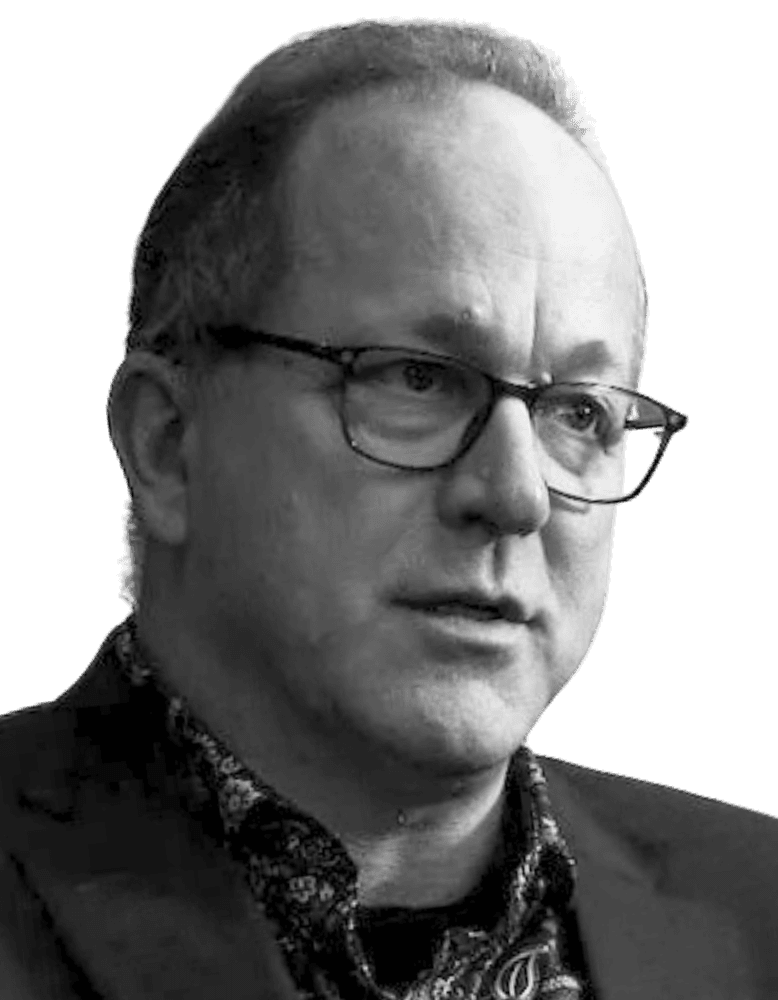
Jeffery Kripal
Jeffrey J. Kripal is the J. Newton Rayzor Chair in Philosophy and Religious Thought at Rice University, where he co-hosts the Archives of the Impossible collection and conference series. He also co-directs the Center for Theory and Research at the Esalen Institute in Big Sur, California. Jeff is the author of numerous books, most recently How to Think Impossibly: About Souls, UFOs, Time, Belief, and Everything Else (Chicago, 2024). He is presently working on a three-volume study of paranormal currents in the sciences, modern esoteric literature, and the hidden history of science fiction collectively entitled The Super Story: Science (Fiction) and Some Emergent Mythologies. His full body of work can be seen at jeffreyjkripal.com
Plasma and the UFO
This presentation looks at the most recent journals of Jacques Vallee to invoke a dramatic out-of-body experience. It then discusses the plasma theorizing of the physicist Eric Davis and the writer Robert Temple and applies that theorizing to the cases of nineteenth-century Mesmerism and the orgone of Wilhem Reich, as well as the visitor experiences of Whitley Strieber and the lightning strikes of Elizabeth Krohn and Karin Austin. It concludes with some analyses of the science fiction classic Solaris (1961) and the movie 2001: A Space Odyssey (1968).

Kelly Chase
Kelly Chase is the writer and executive producer of Cosmosis: UFOs & A New Reality and the co-host of the Cosmosis podcast. She is the former host of The UFO Rabbit Hole, a highly acclaimed podcast that ranked in the top 1% of global podcasts on Spotify in 2023. She is also the monthly guest host on the long-running Dreamland podcast, created by Art Bell and currently helmed by Whitley Strieber. Kelly is a published author and speaker on the intersection of science, spirituality, and the unexplained. She has been featured on shows such as Beyond: UFOs and the Unknown (Bad Robot) and UFO Revolution (TMZ), and has frequently offered her expertise on UFO topics for NewsNation.
Unfurling the Myth: Narrative as Interface Between the Psyche and the Field
In this talk, I explore the possibility that narrative is not merely a tool for interpreting reality, but a fundamental structure through which reality itself is enacted. Plasma cosmology suggests that we may be embedded within a dynamic, intelligent cosmos—one capable not only of generating complexity, but of participating in the unfolding of meaning. If consciousness is entangled with this living field, then the phenomenon we call “UFO” may be less an external anomaly and more a relational event—a moment in which the cosmos begins to speak through the structure of narrative. And like any good story, its purpose is not simply to inform—but to transform.
I propose that story operates as an ontological interface—an active medium through which the psyche and the cosmos engage in mutual co-creation. Through this lens, the UFO phenomenon is examined not as a discrete object or event, but as an ontological orchestrator: a participatory intelligence that initiates narrative activation by engaging the deep structures of curiosity, uncertainty, and myth. Citing research on the psychology of curiosity and narrative cognition, I suggest that the phenomenon seems uniquely attuned to spark story—deploying absurd sequences, temporal distortions, and unresolved meanings to catalyze both individual transformation and cultural re-mythologization.
In an era of collapsing epistemologies and proliferating anomalies, this talk asks us to consider: What if the UFO doesn’t just break our understanding of reality—but triggers the narrative engine by which new realities are made?

Peter Sjöstedt-Hughes
Peter Sjöstedt-Hughes is a Philosopher of Mind and Metaphysics, and lecturer at the University of Exeter. He specializes in the thought of Whitehead, Nietzsche, Bergson, and Spinoza—and in fields pertaining to panpsychism, pantheism, mental causation, and altered states of consciousness. Peter is the author of Noumenautics (2015), Modes of Sentience (2021), co-editor and contributor of Bloomsbury’s Philosophy and Psychedelics (2022), the TEDx Talker on “psychedelics and consciousness,” and he is inspiration to the recreation of inhuman philosopher Marvel Superhero, Karnak.
Plasmonadology: Plasmoids and Panpsychism
Are plasmoids primal monads? I begin by contextualising panpsychism—the view that all actual “things” have an experiential perspective—within the framework of the metaphysics of mind, offering a menu of interweaving options including idealism, physicalism, dualism, etc. Thereafter I seek to show that one of the primary issues for panpsychism is how to define such a “thing”: what makes a “thing” a unitive experiential entity, a “monad”? How do we differentiate monads from aggregates, bees from boats, say—selves from swarms? The question often turns to notions of self-organisation and conative agency—related to theories such as autopoiesis or integrated information theory. Thus does this important issue for panpsychism overlap with the question of the essence of “life”: What constitutes a life-form? More fundamentally, what makes a monad? Is the monad-aggregate distinction one of kind or of degree? Panexperientially transcending any organic-inorganic dichotomy, I then scout this monadology (with nods to Leibniz, Bruno, Nietzsche, Bergson, Whitehead, and Spinoza) in its relation to plasmoidology, with the intention of enriching the understanding of panpsychism with plasmoids, and of plasmoids with panpsychism:—Are plasmoids primal monads?

Dana Kippel
Dana Kippel is a polymath, author, filmmaker, and advocate for mental health and neurodivergence, pioneering the study of Plasma Intelligence and Consciousness. Her visionary work positions plasma as a bridge between dimensions and timelines, reshaping our understanding of perception, potential, and the nature of reality. Her debut book, A New Force: Plasma, Consciousness, and the New Human Potential (Summer 2025), explores plasma-consciousness synergy and its implications for the future of humanity. Dana wrote and directed the metaphysical film Reflect, writes metaphysical poetry, and is currently developing her second science fiction feature. Her mission is to empower people from the inside out—to become their truest selves, to point them toward their unique magic, and to help remind the world that we are not as alone as we think we are.
Awakening to a Co-Creative Plasma Reality
In this presentation, I propose a new paradigm: that plasma is not merely the fourth state of matter, but the dynamic, living foundation behind all states of matter and experience. Building on the scientific work of Anthony Peratt and Frank-Kamenetskii, as well as emerging discoveries in solid-state physics, neuromorphic materials, quantum biology, and emotional field research, I explore how plasma’s self-organizing, field-responsive, and memory-like behaviors permeate the entire fabric of reality. Plasma is revealed not only as a physical medium but as the intelligent “living clay” upon which consciousness imprints—shaping spacetime geometry, biological systems, and emergent realities through a synergy I call Plasma-Consciousness Synergy (PCS).
Drawing from scientific evidence, mythological archetypes, and multidimensional theory, I present plasma as a modern reflection of the ancient feminine field—once suppressed, betrayed and controlled, now intuitive, responsive, and alive. Through healing, emotional intelligence, and expanded awareness, humanity is awakening to an active co-creative relationship with plasma, unlocking new capacities: timeline access, dimensional exploration, supportive technologies, and expanded communication across realities. This talk offers a bridge between physics, metaphysics, and future human potential, proposing that we are in the beginning stages of a profound evolution—where our conscious awareness and plasma harmonize to birth a new, participatory cosmos.

Jude Currivan
Jude Currivan is a cosmologist, planetary healer, futurist, award-winning author, filmmaker, co-founder (in 2017) of WholeWorld-View, and formerly one of the most senior businesswomen in the UK. With a Master’s degree in Physics from Oxford University, specializing in quantum physics and cosmology, and a PhD in Archaeology from the University of Reading, researching ancient cosmologies, she is a lifelong researcher into the nature of reality. Her work integrates leading-edge science, research into consciousness, and perennial wisdom teachings into a holistic worldview. Author of seven books—most recently The Cosmic Hologram (2017) and The Story of Gaia (2022)—her 2024 short documentary film “A Radical Guide to Reality” is freely available on YouTube in 20 languages, from Arabic to Ukrainian.
How an Emergent Cosmology of a Nonlocally Unified, Meaningfully In-formed and Holographically Manifested Universe can Underpin and Frame the Emergence of Planetary System, Biological Organisms, Individuated Self-awareness and Transpersonal Psychology
The Nobel Prize for Physics in 2022 effectively accepts the validity of universal nonlocality. Other key discoveries and insights in recent years are also progressively showing that the appearance of our Universe, its energy-matter and space-time, is not foundational but emerging from deeper, discarnate realms of causation. As digitized and meaningful in-formation, its manifestation pixelated at the Planck scale of existence. Extending from studies of black holes to the entire Universe, the so-named holographic principle also models the 4D appearance of our Universe as a holographic projection of its 2D boundary. Expanding the three universal Laws of Thermodynamics to three Laws of Information, or Infodynamics then points the way to reconciling Quantum and Relativity Theories and offers an understanding of how the finite lifecycle of our Universe and its evolutionary arc from simplicity to complexity, flows from its first moment until its last. Treating gravity as being in-tropically emergent shows how in doing so, its inherent evolutionary impulse eventually engenders planetary systems able to evolve the complexity of biological organisms, embodying individuated self-awareness and innate transpersonal psyches.

